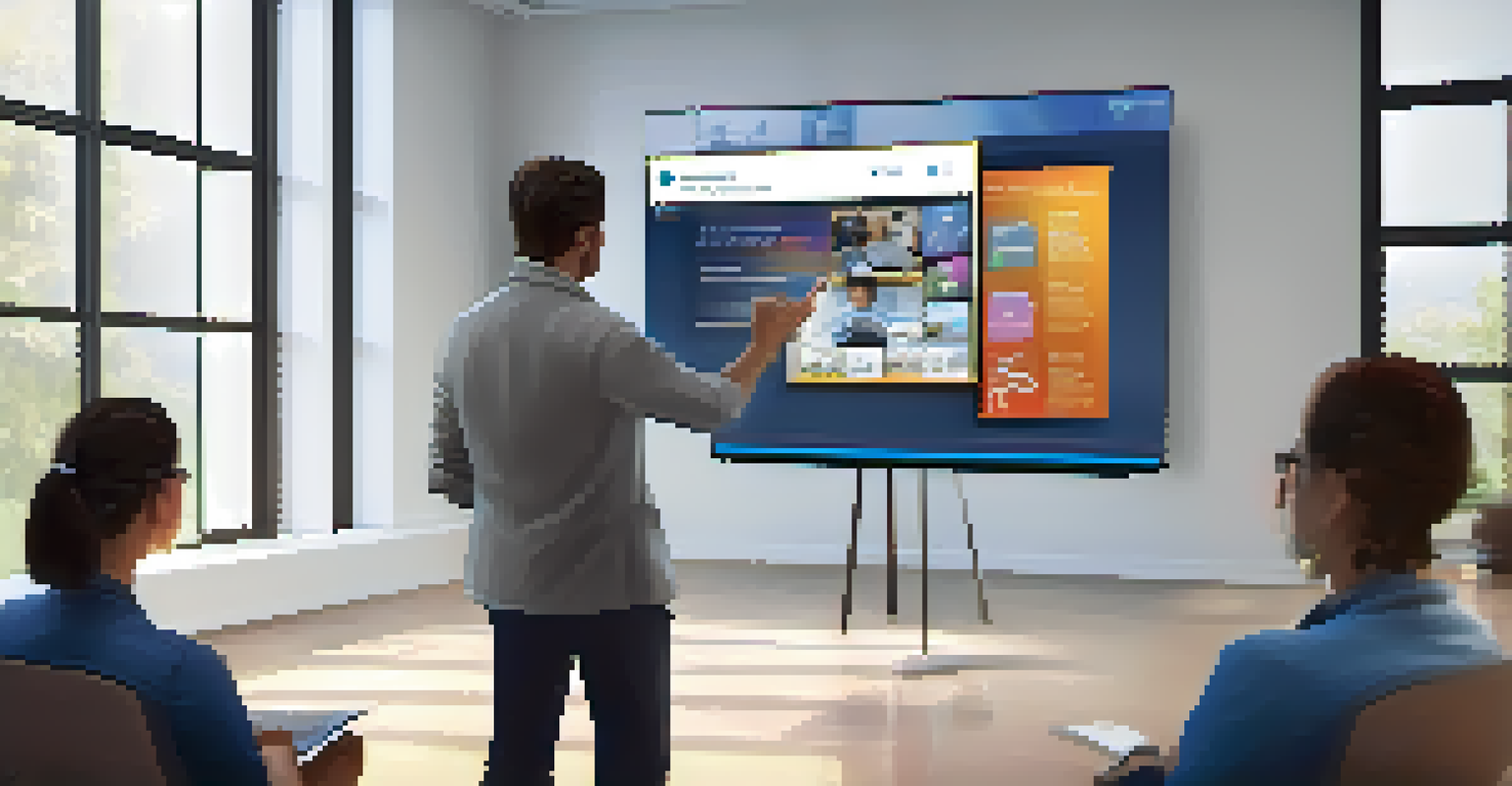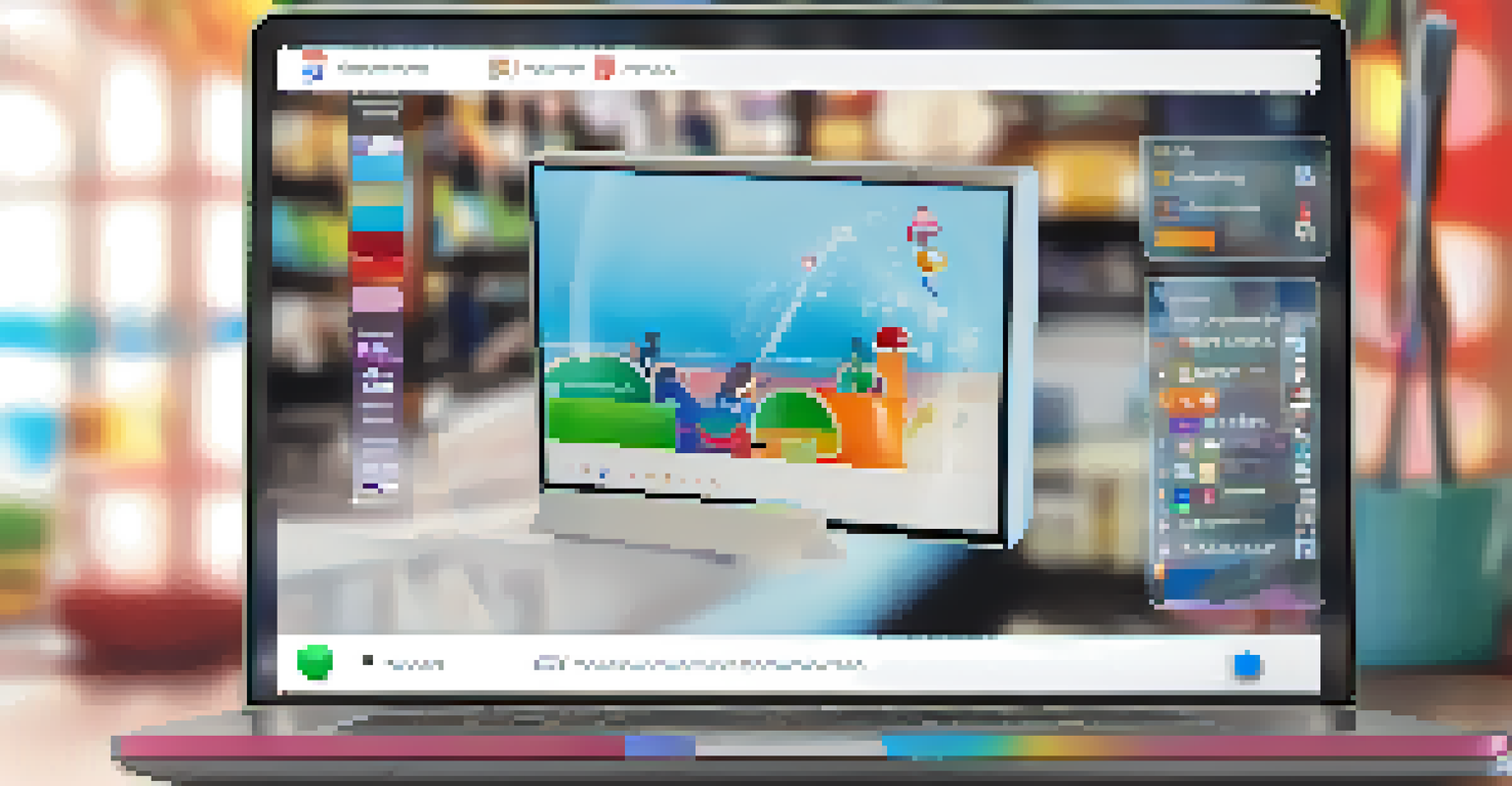A Guide to Integrating Video Content into Your LMS

Understanding the Benefits of Video in Learning
Video content has become a powerful tool in the education sector, transforming how learners engage with material. It caters to various learning styles, making complex topics more accessible through visual and auditory cues. For instance, a tutorial video can break down difficult concepts into digestible segments, helping learners grasp the information better.
Video is a great way to build rapport and connection with your audience.
Moreover, incorporating video can significantly increase learner retention rates. Studies show that people remember 80% of what they see and do, compared to only 20% of what they read. This statistic highlights the importance of visual learning, making video a valuable asset in your LMS.
Lastly, video content can foster a sense of connection between instructors and students. Through personal anecdotes or real-world applications presented in videos, learners feel more engaged and invested in their education.
Choosing the Right Type of Video Content
When integrating video into your LMS, it's crucial to select the right type of content that aligns with your learning objectives. There are various formats to consider, such as instructional videos, webinars, or animated explainers. Each type serves a unique purpose and can cater to different aspects of the learning experience.

For example, instructional videos are great for step-by-step guides, while animated videos can simplify complex ideas through engaging visuals. Understanding your audience's needs will help in selecting the most effective format.
Video Enhances Learning Retention
Incorporating video content can significantly improve learner retention, as studies show people remember 80% of what they see and do.
Additionally, consider the length of your videos. Short, focused videos typically keep learners engaged better than lengthy lectures. Aim for concise content that delivers value without overwhelming your audience.
Creating High-Quality Video Content
Quality matters when it comes to video content. Investing in good equipment and editing software can significantly enhance the production value of your videos. Clear audio and crisp visuals create a professional feel and maintain viewer interest, making it essential to focus on these aspects.
The more interactive the content, the more engaged the learner will be.
Moreover, scripting your content before recording can help ensure clarity and flow. A well-structured script prevents rambling and helps convey your message effectively. Remember, a clear and engaging delivery can make all the difference in how your content is received.
Don’t forget to include branding elements in your videos, such as logos and consistent color schemes. This not only reinforces your identity but also adds a polished touch to your content.
Incorporating Interactive Elements in Videos
Interactive videos take learner engagement to the next level by allowing viewers to participate actively. Features like quizzes, clickable links, and branching scenarios can turn passive watching into an engaging experience. For instance, a video that pauses to ask questions can reinforce learning and encourage critical thinking.
These elements not only enhance interactivity but also provide immediate feedback to learners. By knowing what they got right or wrong, learners can adjust their understanding in real time, leading to better retention.
Choosing the Right Video Format
Selecting the appropriate type of video content, such as instructional videos or animated explainers, is crucial for aligning with learning objectives.
Furthermore, interactive videos can create a more personalized learning experience. Tailoring content based on user choices helps cater to individual learning paths, improving overall satisfaction with the LMS.
Optimizing Video Content for Your LMS
Once you've created your video content, optimizing it for your LMS is essential. This involves choosing the right file formats and ensuring they are compatible with your system. Common formats like MP4 are widely supported and offer a good balance of quality and file size.
Additionally, consider the loading times and streaming capabilities of your LMS. Large video files can slow down the learning experience, so compressing videos without losing quality can help maintain a smooth user experience.
Finally, make sure your videos are accessible to all learners. Including captions or transcripts is not just a best practice; it also enhances engagement for those with hearing impairments or language barriers.
Tracking Engagement and Performance Metrics
To understand the impact of your video content, tracking engagement and performance metrics is vital. Most LMS platforms offer analytics tools that allow you to monitor how learners interact with your videos. Metrics such as view duration, completion rates, and quiz scores can provide valuable insights.
For instance, if a significant number of learners drop off at a certain point in a video, it may indicate a need for content adjustments. By analyzing this data, you can continuously improve your video content to better meet learners' needs.
Optimize and Promote Video Content
Optimizing video for your LMS and promoting it through various channels are essential steps in maximizing its reach and effectiveness.
Regularly reviewing these metrics will enable you to refine your approach, ensuring that your video content remains relevant and effective.
Promoting Video Content Within Your LMS
Creating great video content is just the first step; promoting it is essential for maximizing its reach. Utilize announcements, newsletters, or discussion boards within your LMS to highlight new video content. Engaging learners through multiple channels will increase visibility and encourage participation.
Additionally, consider creating a dedicated section for video resources in your LMS. Organizing content by topics or themes makes it easier for learners to find what they need, fostering a more user-friendly experience.

Lastly, encourage learners to share their thoughts and feedback on the videos. This creates a sense of community and can lead to valuable discussions, further enriching the learning experience.